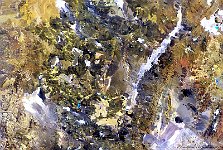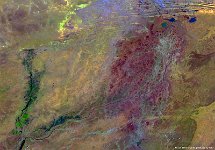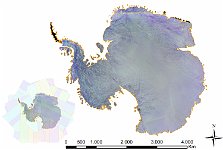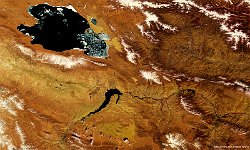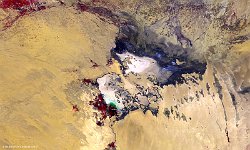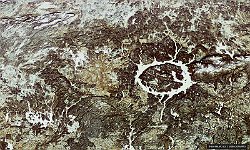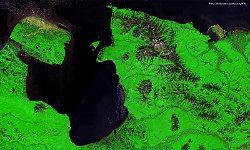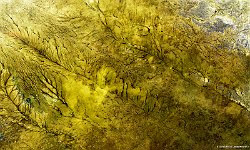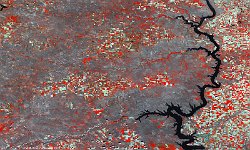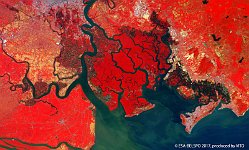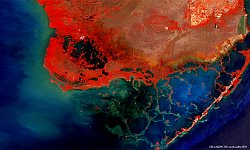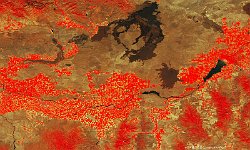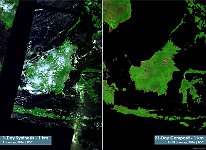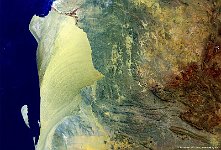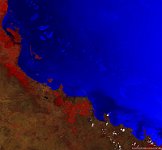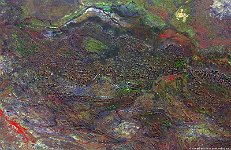33 / 84
Manicouagan crater, Quebec
The 100 m false-colour image of 16 july 2016 shows us Lake Manicouagan, a ring-like lake in central Quebec, Canada. It shows the huge, almost perfect circle that scientists believe resulted from the impact of a giant meteorite, 200 million years ago. The collision melted the rock and pressure created the central mound. The crater is a multiple-ring structure about 100 km across, with the reservoir at its 70 km diameter inner ring being its most prominent feature. It surrounds an inner island plateau called René-Levasseur Island. The lake and island are clearly seen from space and are sometimes called the "eye of Quebec."
Date: 23/01/2017
Resolution: 100m
